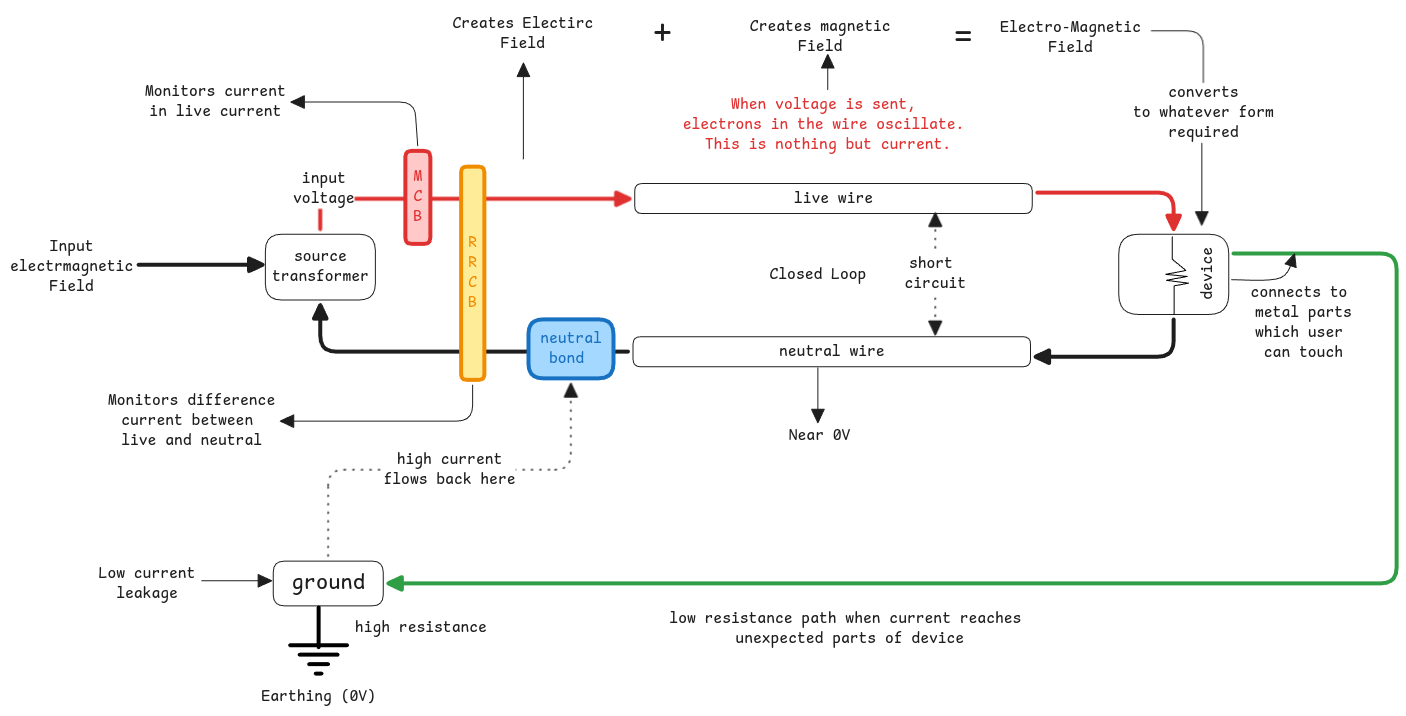Current Flow
What flows is the electromagnetic fields that travels through the electrons.
when voltage is provided, the electron start to oscillate in the wire.
One electron oscillates and it pushes the next one.
When we say current flow, it means how the electrons oscillate and move the electric field from one electron to other thereby covering the entire wire.
Current
More current means, more magnetic field. So the device with low resistance means it simply lets more magnetic field generated and this is across the entire live wire. From source until the device.
Constant Input Voltage
The input voltage coming from the main source outside of the house is always same. The difference comes only in the current flow which is determined by the load connected to the circuit.
If more devices are connected, the current flow increases. Also depends mainly on the resistance of the device which decides how much current it really needs to generate.
When describing an input, we always mention only the voltage because that's the only thing the transformers can control. The current is something that adjusts automatically based on load (ohm's law).
Closed Circuits
For the current to flow, the circuit must be a closed loop. This means, the electromagnetic waves must just move out of the live wire so that the new waves keeps flowing.

Short Circuit
Happens when live and neutral wire touches each other.
The neutral wire has no resistance and this causes heavy surge in the current flow. To avoid further damage, the MCB trips.
When live wire touches the neutral wire, the current flow increases since the neutral wire has zero resistance.
The MCB sees that the current drawn from the wire is way higher than the allowed levels.
Analogies
- Water flows inside pipes. But the current flows around the wire.
- The AC current flows like an Mexican wave in stadium. It must be closed loop for the new wave to come in.